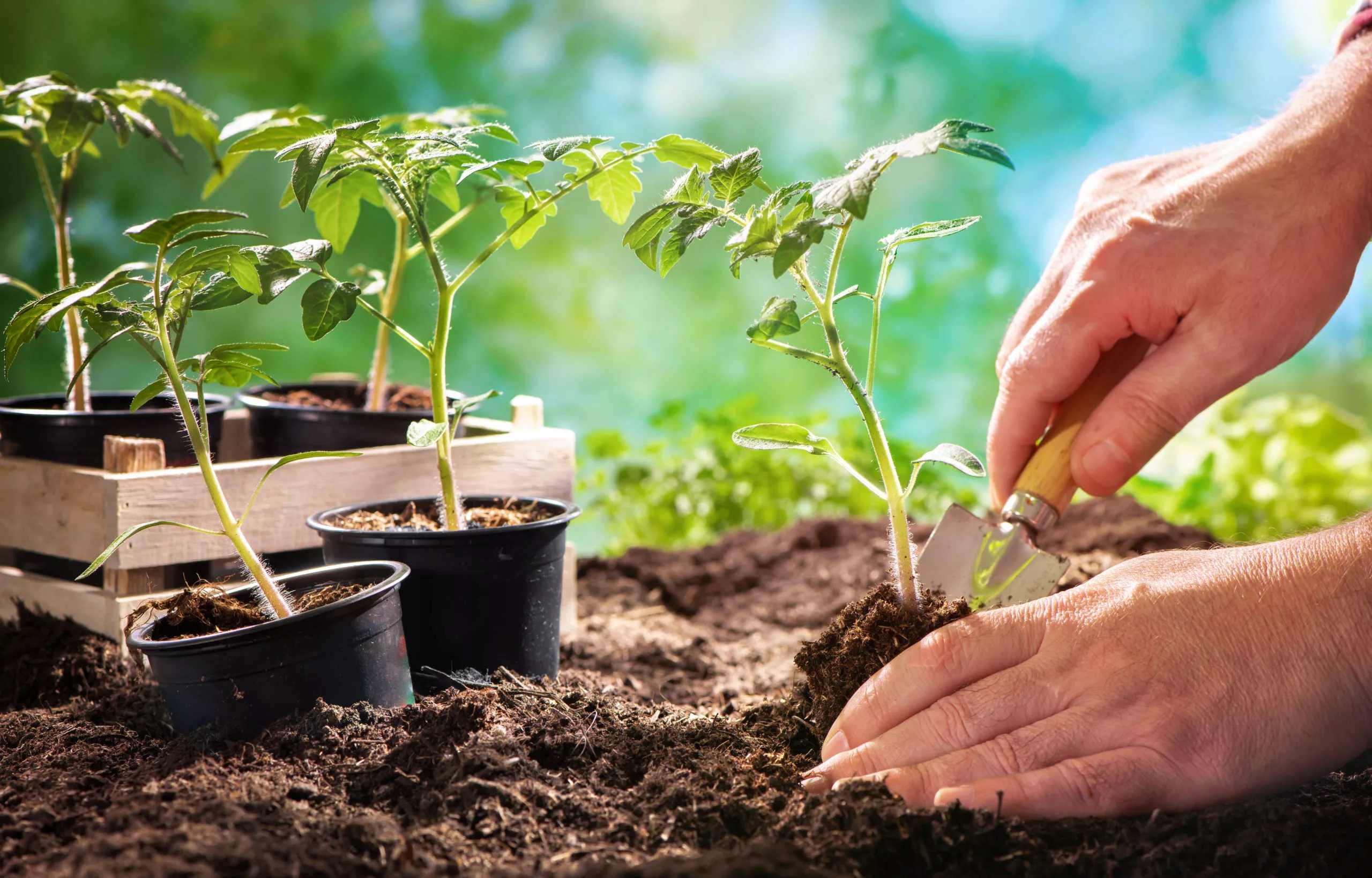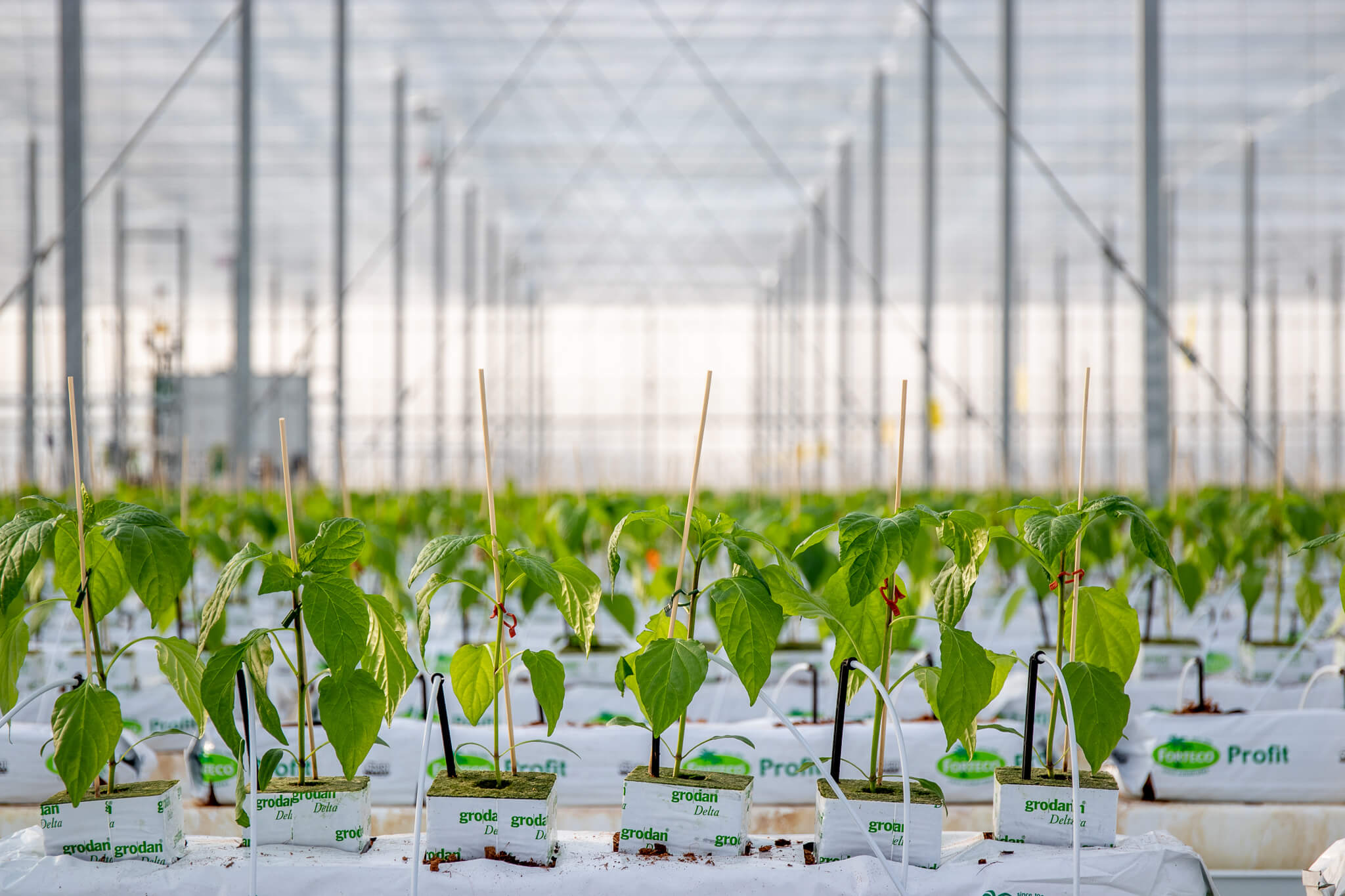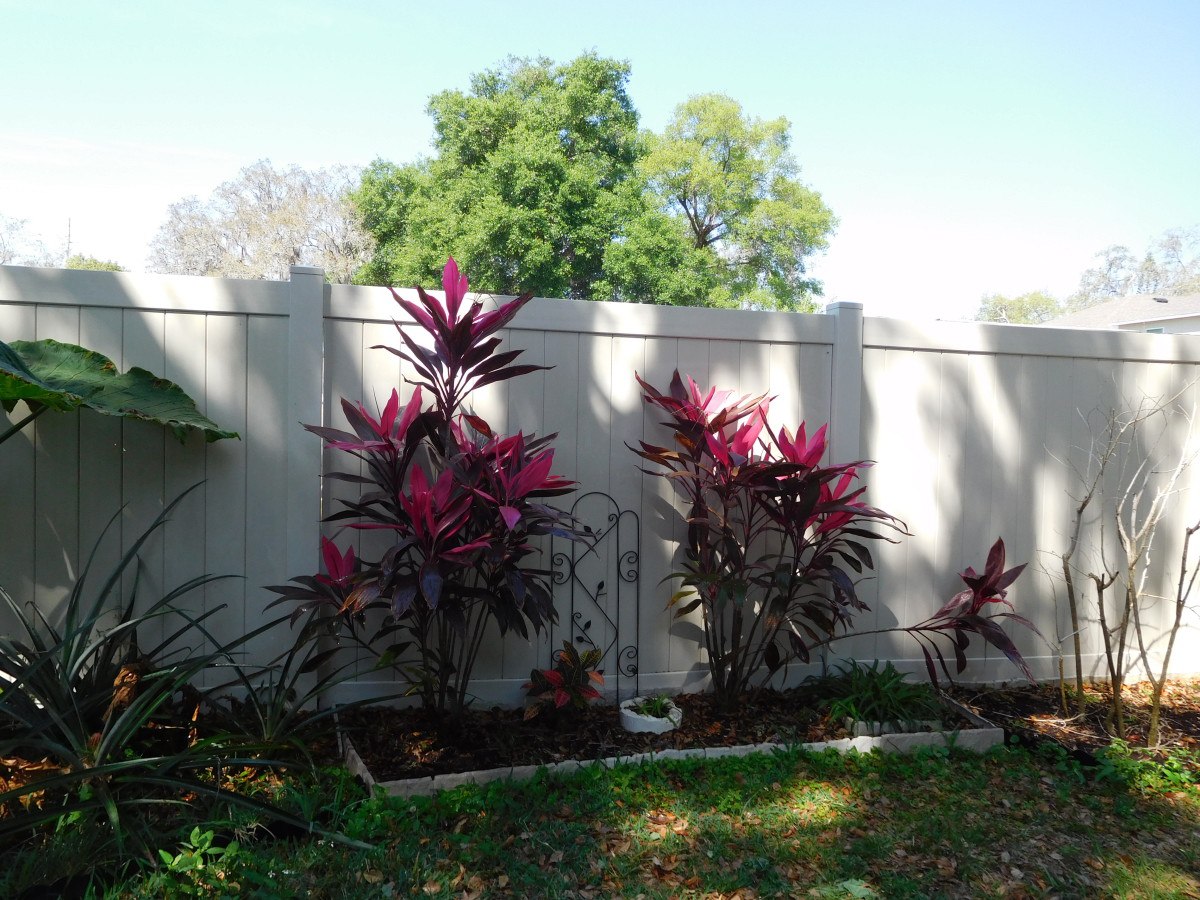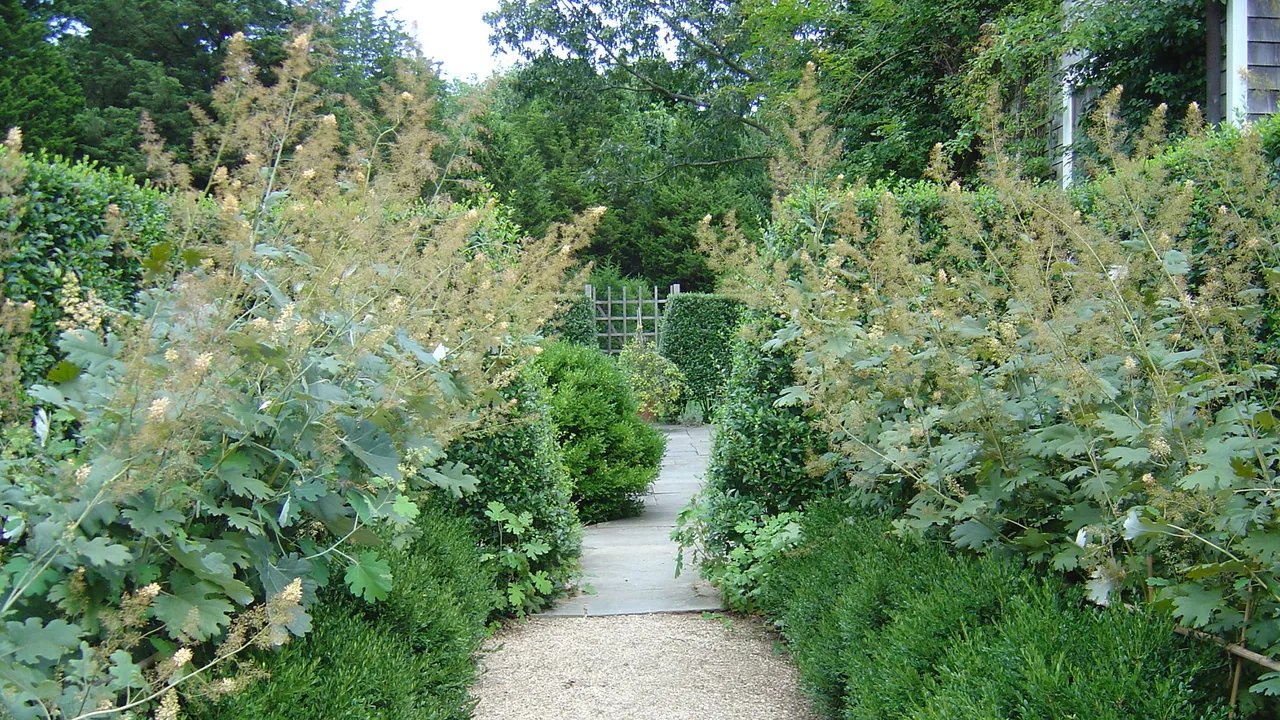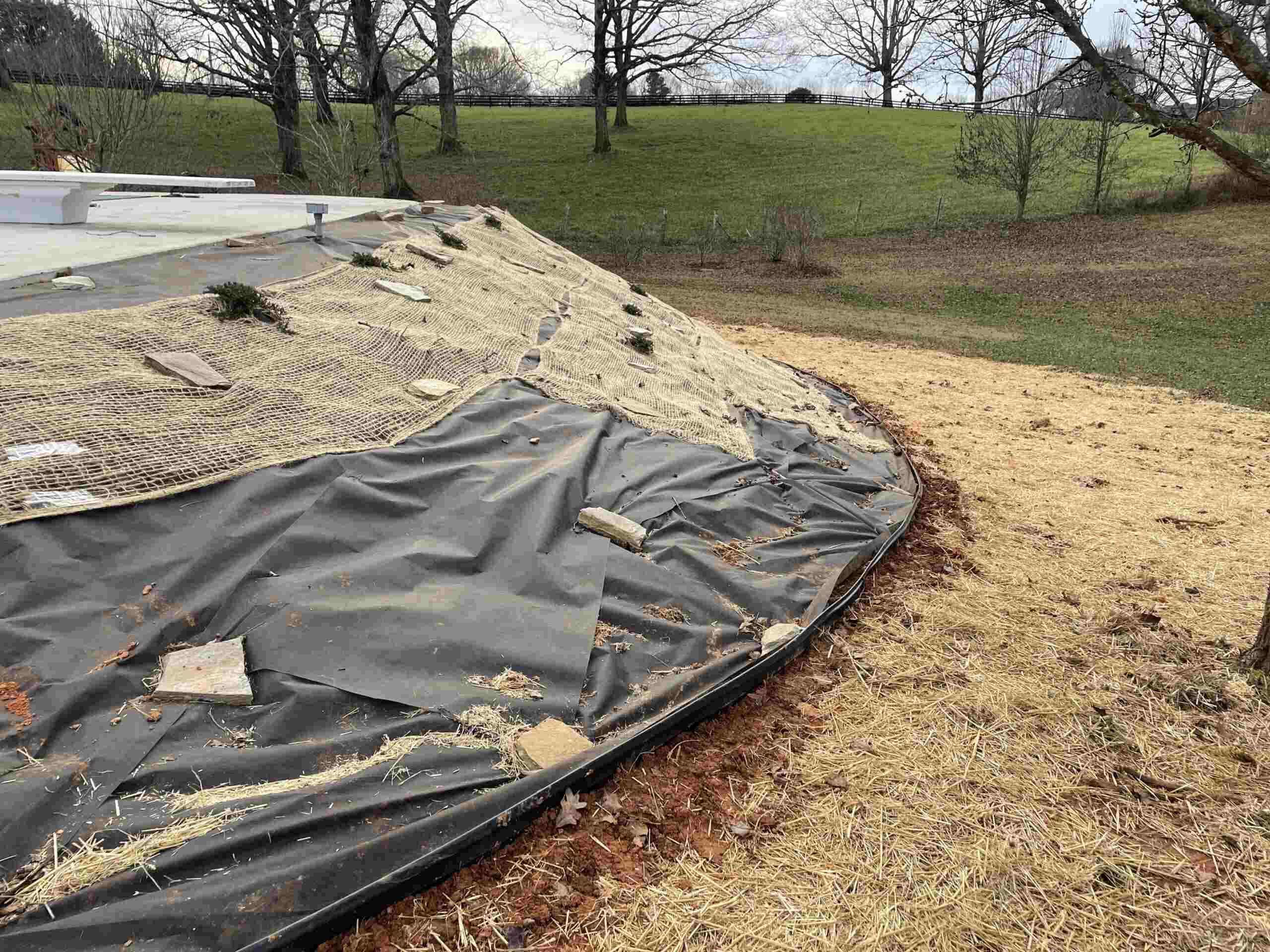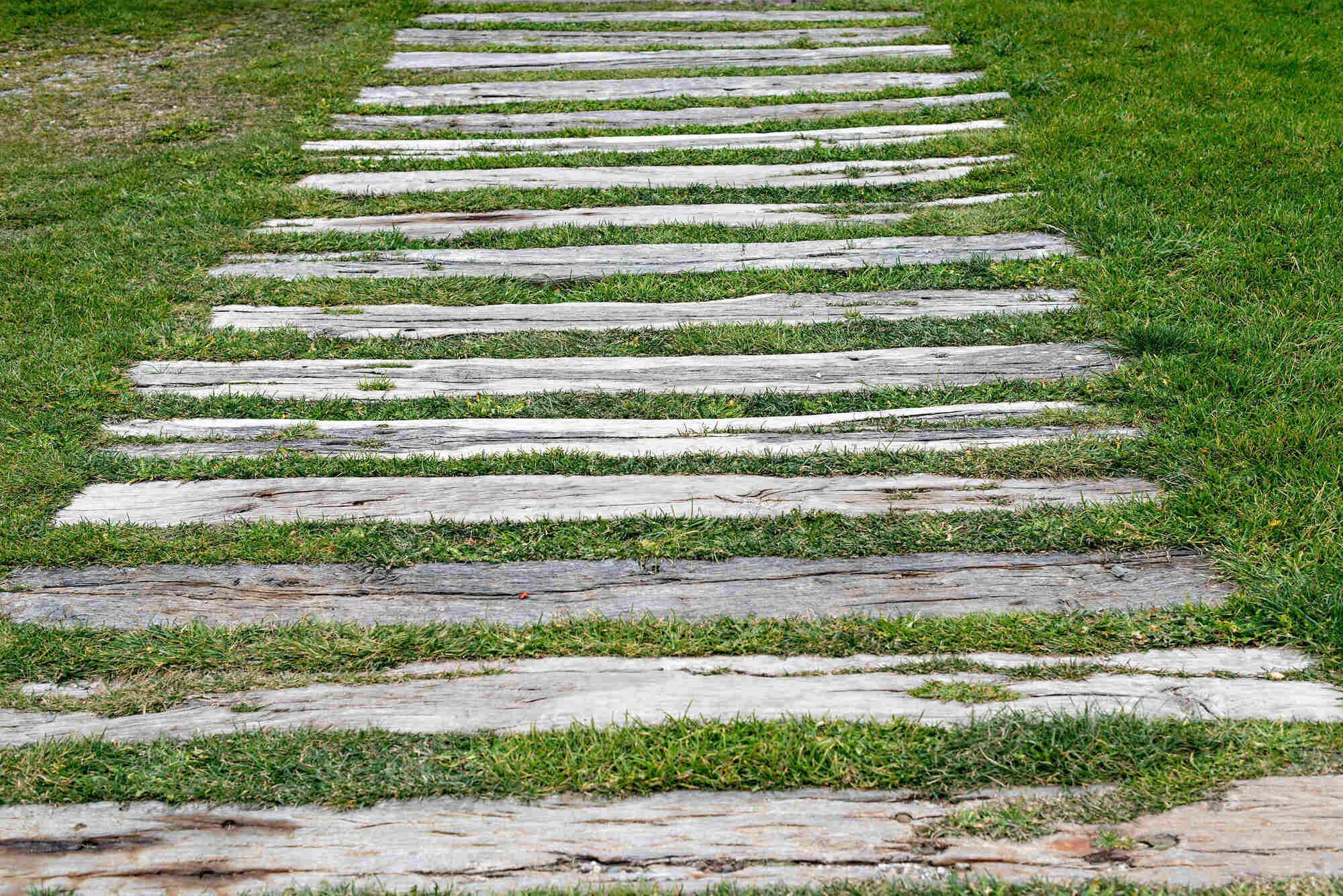Home>Gardening News and Trends>Gardening Trends>When Is The Best Time To Plant Landscaping
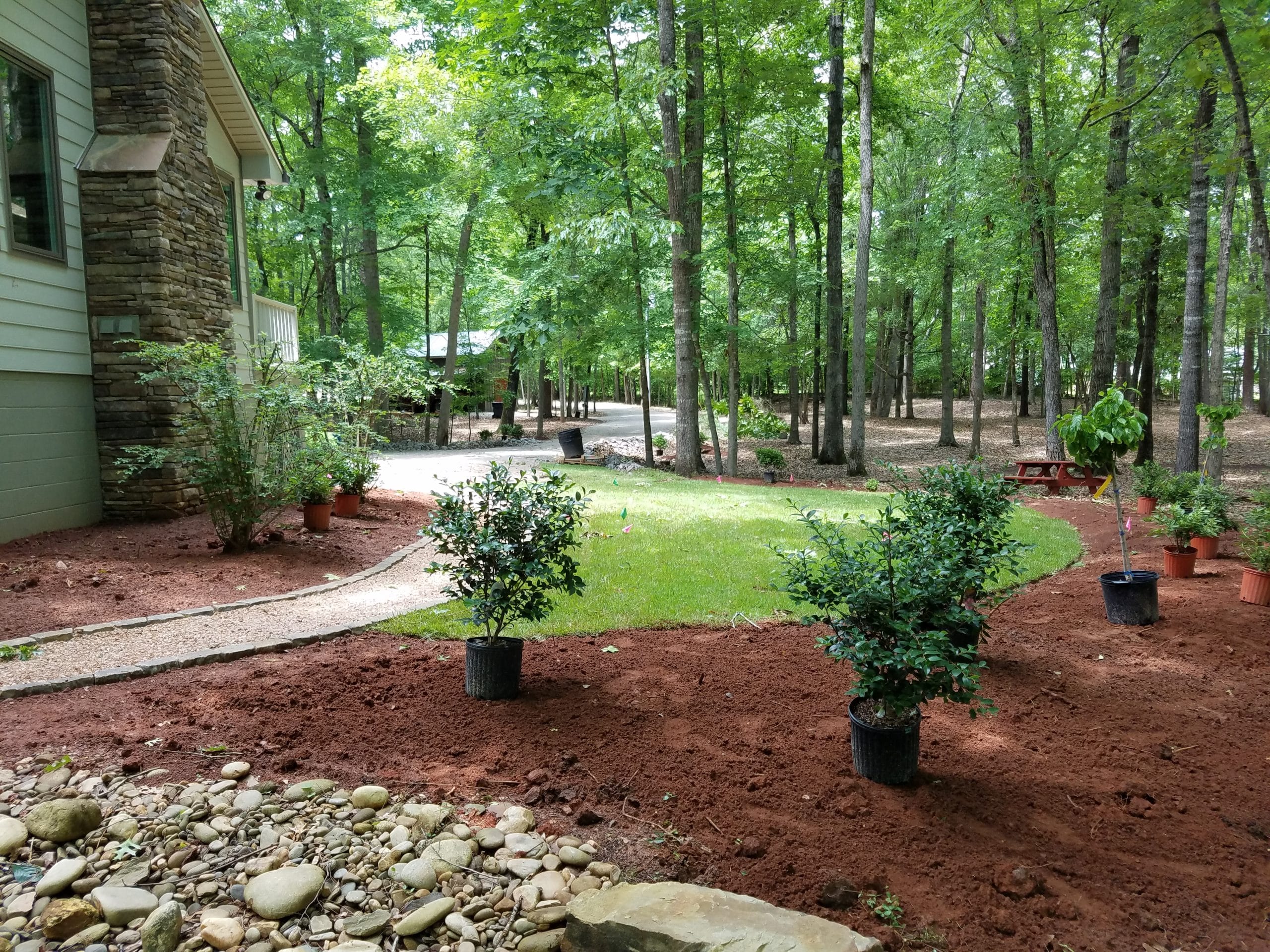

Gardening Trends
When Is The Best Time To Plant Landscaping
Modified: February 10, 2024
Discover the latest gardening trends and find out the best time to plant landscaping for optimal results. Enhance your outdoor space with expert tips and advice.
(Many of the links in this article redirect to a specific reviewed product. Your purchase of these products through affiliate links helps to generate commission for Chicagolandgardening.com, at no extra cost. Learn more)
Table of Contents
Introduction
Planting landscaping is an exciting endeavor that can transform your outdoor space into an oasis of beauty and tranquility. Whether you’re planning to create a vibrant flower garden, a lush green lawn, or an inviting vegetable patch, one of the critical factors to consider is the timing of the planting. Knowing when to plant can significantly impact the success and growth of your landscaping.
Planting at the right time allows your plants to establish a strong root system, adapt to their environment, and thrive. It not only ensures optimal growth but also helps minimize the risk of damage due to extreme weather conditions or poor soil conditions. However, determining the best time to plant can be dependent on various factors, including climate, plant-specific requirements, soil conditions, and seasonal considerations.
In this article, we will explore these factors and guide you on the best timing for planting your landscaping projects. By considering these aspects, you can set your plants up for success, ensuring a beautiful and flourishing outdoor space.
Factors to Consider
When it comes to planting landscaping, several factors should guide your decision on the best time to plant. Understanding these factors will help you make informed choices and increase the chances of successful growth. Let’s take a closer look at these essential considerations:
- Climate and Weather Conditions: The climate and weather patterns in your region play a crucial role in determining the ideal planting time. Different plants have varying temperature and moisture requirements. Consider the average temperatures and rainfall patterns throughout the year to find the optimal conditions for your plants.
- Plant Specifics: Each plant species has its own unique requirements and preferences. Some plants thrive in cooler temperatures, while others prefer warmer conditions. Research your chosen plants to understand their specific needs and determine the best time to plant them for optimal growth.
- Soil Conditions: The quality and condition of your soil are vital for plant growth. Assess the soil pH, texture, and drainage capacity. Certain plants may require specific soil conditions to flourish. Make any necessary amendments to ensure your soil is nutrient-rich and well-drained before planting.
- Seasonal Considerations: Understanding the seasons and their impact on plant growth is key. Different seasons provide varying levels of sunlight, rainfall, and temperature. Consider the characteristics of each season and how they align with the needs of your chosen plants. This will help you determine the most suitable season to plant.
By taking into account these crucial factors, you can create the ideal conditions for your plants to thrive. Let’s explore the best timing for planting landscaping in different seasons.
Climate and Weather Conditions
The climate and weather conditions in your region are fundamental factors to consider when determining the best time to plant your landscaping. Different plants have varying temperature and moisture requirements, and understanding your local climate will help you align the planting with suitable conditions.
If you live in an area with mild and moderate temperatures, such as a Mediterranean climate, you have more flexibility in terms of planting time. Spring and fall are generally favorable for planting, as the temperatures are moderate and there’s a good balance of rainfall. This allows plants to establish their root systems before the heat of summer or the cold of winter.
On the other hand, if you reside in an area with extreme or fluctuating temperatures, careful consideration of the weather conditions is crucial. In regions with harsh winters, it’s advisable to avoid planting in late fall or winter when the ground is frozen. Instead, focus on planting in spring or early summer, allowing enough time for the plants’ roots to establish before the colder months arrive.
In areas with scorching summers, planting in the heat of summer may stress out the plants, as they require excessive watering and protection from the intense heat. It’s best to opt for spring or early fall planting to provide the plants with cooler temperatures and ample time to adapt before facing extreme heat.
Additionally, consider the rainfall patterns in your region. If you live in an area with a dry season, it’s wise to plant during or just before the rainy season. This will provide natural irrigation and reduce the need for excessive watering, ensuring the plants receive the necessary moisture for their growth.
By understanding and adapting to the climate and weather conditions in your region, you can choose the most suitable time to plant your landscaping. This will give your plants the best chance to thrive and withstand the environmental challenges they may face.
Plant Specifics
When it comes to planting landscaping, it’s essential to consider the specific needs and preferences of the plants you intend to grow. Different plants have different growth patterns and requirements, including temperature tolerance, sunlight exposure, and soil preferences. Understanding these plant specifics will help you determine the best time to plant them for optimal growth.
Some plants, such as cool-weather vegetables like lettuce and spinach, prefer cooler temperatures and can be planted in early spring or early fall. These plants can tolerate light frosts and thrive in the milder temperatures of these seasons.
On the other hand, warm-season plants like tomatoes, peppers, and eggplants require warmer temperatures to thrive. Planting them too early in the spring when the soil is still cold can stunt their growth. It’s best to wait until after the last frost date in your area and the soil has warmed up before planting these heat-loving crops.
Perennial flowers and shrubs have their own specific requirements as well. Some perennials thrive in cooler temperatures and can be planted in early spring or late fall, while others prefer warmer temperatures and are better planted in late spring or early summer.
Additionally, consider the sun exposure requirements of your plants. Some plants thrive in full sun, while others prefer partial shade. Take into account the amount of sunlight your landscape receives throughout the day and choose the planting time that provides the optimal sun exposure for your plants.
Lastly, closely observe the growth patterns and dormancy periods of your plants. Some plants bloom in spring or summer, while others thrive during the fall or winter months. Understanding the natural growth cycle of your plants will help you determine the best time to plant them for maximum blooming and growth.
By researching and understanding the specific requirements of the plants you intend to grow, you can choose the ideal time to plant. This will ensure that your landscaping projects are met with success, resulting in healthy and vibrant plants.
Soil Conditions
The quality and condition of your soil play a crucial role in the success of your landscaping endeavors. Before planting, it’s important to assess the soil and make any necessary preparations to create an ideal growth environment for your plants.
One key aspect to consider is the pH level of the soil. Different plants have varying pH preferences, ranging from acidic to alkaline. Testing the pH of your soil will help you determine if any amendments are needed to adjust it to a favorable level for your desired plants. This can be done using a soil testing kit or by contacting your local agricultural extension office for assistance.
Soil texture is another important factor to consider. The texture refers to the proportion of sand, silt, and clay in the soil. Sandy soils drain quickly and may require additional organic matter to retain moisture. Clay soils, on the other hand, have poor drainage and may need amendments to improve aeration and prevent waterlogging. Understanding the texture of your soil will guide you in making the necessary improvements for optimal plant growth.
In addition to pH and texture, soil fertility is crucial for the health and growth of your plants. Assess the nutrient content of your soil, including levels of nitrogen, phosphorus, and potassium. If deficiencies are detected, organic matter, such as compost or well-rotted manure, can be added to enhance fertility and provide essential nutrients.
Before planting, it’s important to prepare the soil by removing any weeds, rocks, or other debris that could hinder plant growth. Loosening the soil and incorporating organic matter will improve its structure and create a favorable environment for root development.
Considering soil conditions when deciding the timing for planting is vital. The soil should be workable, not too wet, and not frozen or compacted. Planting in muddy or waterlogged soil can lead to poor root development and increased risk of disease. It’s advisable to wait until the soil has dried out and reached a suitable consistency before planting.
By addressing soil conditions and making the necessary amendments, you can create an optimal growth environment for your plants. This will promote healthier roots, more efficient nutrient absorption, and overall improved plant growth and vitality.
Seasonal Considerations
Understanding the seasons and their impact on plant growth is essential when determining the best time to plant your landscaping. Each season offers different environmental conditions and considerations that can influence the success of your plants.
Spring Planting: Spring is a popular time for planting as temperatures start to warm up, and plants begin to emerge from dormancy. It is an ideal time for planting cool-season annuals, such as pansies and snapdragons, as well as many perennial flowers. Spring planting allows plants to establish their roots before the hotter summer months, promoting strong growth and abundant blooming.
Summer Planting: Summer can be challenging for planting due to the heat and potential water stress. However, it is still possible to establish certain heat-loving plants during this time. Consider planting heat-tolerant vegetables like tomatoes, peppers, and melons, as well as drought-resistant flowers like zinnias and marigolds. Be sure to provide adequate water and protection from intense sunlight to support proper growth.
Fall Planting: Fall is an ideal time for planting in many regions, as temperatures cool down, and rainfall typically increases. It’s an opportune time to establish trees, shrubs, and perennial flowers, as the cooler temperatures support root development. Fall planting allows plants to develop a strong root system over the winter months, ensuring a healthy start in the following spring.
Winter Planting: In some regions with milder winters, winter planting can also be considered. This includes planting bare-root trees and shrubs or cool-season vegetables like lettuce and cabbage. The cooler temperatures and occasional rainfall during winter can provide favorable conditions for root establishment. Just ensure that the soil is workable and not waterlogged or frozen before planting.
It’s important to note that seasonal considerations may vary depending on your specific climate and region. Understanding the unique characteristics of each season in your area will help you make informed decisions about when to plant and which plants are best suited for that time.
By aligning your planting with the seasons, you can take advantage of the natural growth cycles and provide the best conditions for your plants to thrive. This will result in healthier, more resilient plants that can withstand the environmental challenges they may encounter.
Spring Planting
Spring is a season of renewal and growth, making it an ideal time for planting a wide variety of landscaping projects. As temperatures begin to warm up and the threat of frost diminishes, many plants come out of their winter dormancy and start to actively grow. Spring planting allows for optimal root development, establishment, and abundant blooming.
One of the main advantages of spring planting is the availability of a wide range of plant options. Nurseries and garden centers are stocked with an assortment of annual flowers, perennial plants, and vegetable seedlings during this time. It’s a perfect opportunity to add pops of color to your garden with vibrant flowers like tulips, daffodils, and hyacinths.
Spring is also an ideal time to plant cool-season annuals such as pansies, petunias, and snapdragons. These plants can tolerate the cooler temperatures of early spring and will continue to thrive throughout the milder months. The gentle warmth and longer days provide optimal conditions for these cool-season favorites.
Additionally, many perennial flowers prefer to be planted in the spring. By planting in early to mid-spring, these perennials have ample time to establish strong root systems before the hotter months. This promotes healthier plants with more prolific blooming during their first season and beyond. Be sure to select perennials suitable for your climate, taking into consideration factors such as sun exposure and soil conditions.
Spring is also a great time to plant cool-season vegetables such as lettuce, spinach, and radishes. These crops prefer the milder temperatures of spring and can tolerate light frosts. By planting early in the season, you can enjoy a bountiful harvest before the heat of summer arrives.
When spring planting, it’s important to wait until the threat of frost has passed and the soil has thawed and dried out enough to be workable. Working with soil that is too wet can lead to compacted soil, hinder root development, and promote disease. Ensure that the soil is friable and well-drained before planting.
To give your plants the best start, prepare the soil by removing any weeds or grasses, and amend it with organic matter or compost to improve its structure and fertility. Water newly planted specimens deeply but infrequently, allowing the soil to dry out slightly between waterings. Mulching around plants can help retain moisture and suppress weeds.
Overall, spring planting provides an excellent opportunity to kickstart your landscaping projects and get a head start on a beautiful and productive garden. By selecting the right plants and providing them with the necessary care, you can enjoy a vibrant and thriving outdoor space throughout the growing season.
Summer Planting
Summer, with its warm weather and longer days, can present some unique challenges for planting landscaping projects. However, with careful planning and attention, it is still possible to establish new plants and enjoy a flourishing garden during this season.
When it comes to summer planting, it’s important to consider the heat and potential water stress that plants may experience. It’s advisable to choose heat-tolerant plants that can withstand the intense temperatures and require less water.
One option for summer planting is heat-loving vegetables. Tomatoes, peppers, eggplants, and other warm-season crops thrive in the long, sunny days of summer. These plants require at least six to eight hours of direct sunlight to produce a plentiful harvest. To manage the heat, consider providing shade and using mulch around the base of the plants to retain moisture and cool the soil. Additionally, regular watering is crucial to prevent dehydration and wilting.
Another option for summer planting is drought-resistant flowers. Plants such as zinnias, marigolds, and sunflowers are known for their ability to withstand dry conditions and still produce vibrant blooms. These flowers add color and beauty to your garden while requiring less water than other varieties. Consider grouping these plants together, using mulch to retain moisture, and watering deeply but infrequently to promote deep root growth.
In regions with scorching summers, it’s important to provide proper protection for your plants. Consider using shade cloth or floating row covers to shield vulnerable plants from intense sunlight and reduce water evaporation. Watering in the early morning or evening when temperatures are cooler can also help reduce stress on the plants.
It’s important to note that summer planting may require more attention and care compared to other seasons. Regular watering is crucial to prevent drought stress, and keeping an eye out for pests and diseases is essential in warmer and more humid conditions. Monitor your plants closely and address any issues promptly to maintain their health.
While summer planting may present some challenges, it provides an opportunity to enjoy a beautiful and productive garden during the warmer months. By selecting heat-tolerant plants, providing adequate water and protection from intense sunlight, and being diligent in maintaining plant health, you can create a thriving summer landscape.
Fall Planting
Fall is a prime season for planting landscaping projects as temperatures begin to cool down and conditions become favorable for root establishment. It is an ideal time to plant a variety of trees, shrubs, perennials, and bulbs, allowing them to establish strong root systems during the cooler months.
The cooler temperatures of fall create an optimal environment for root development. While the air might be getting cooler, the soil retains warmth accumulated during summer, providing a comfortable setting for plants to grow. Additionally, fall planting allows plants to take advantage of autumn rains, reducing the need for frequent watering and aiding in their establishment.
One of the main benefits of fall planting is that it allows plants to establish their roots before the ground freezes over winter. This gives them a head start for the following spring, allowing them to focus on leaf and flower production rather than root development. Trees and shrubs planted in the fall have ample time for their root systems to establish and expand, making them more resilient and better equipped to withstand the heat of the following summer.
In the fall, perennial flowers can be planted to provide vibrant blooms in the coming spring and summer seasons. Plants such as tulips, daffodils, and crocuses are perfect choices for fall bulb planting. The cooler temperatures and soil conditions of fall allow bulbs to develop strong roots, ready to produce stunning displays of color once the weather warms up again.
Fall is also a great time to establish cool-season vegetables. Crops like lettuce, spinach, kale, and radishes prefer the cooler temperatures of fall and can be harvested well into the winter months in milder climates. These vegetables can be sown directly in the ground or transplanted as seedlings, offering a fresh and nutritious harvest during the fall and winter seasons.
When fall planting, ensure you select plants that are suited to your climate and are appropriate for the fall planting period. Prepare the soil by removing any weeds or grasses and adding organic matter to improve its structure and fertility. Water newly planted specimens deeply to ensure proper hydration before the arrival of colder weather.
By taking advantage of the favorable conditions of fall, you can establish a strong foundation for your landscaping projects. Fall planting provides an excellent opportunity for plants to establish roots, resulting in healthier and more robust growth in the seasons to come.
Winter Planting
While winter is often considered a dormant season for plants, there are still opportunities for planting and establishing certain types of landscaping projects. Winter planting can be a viable option in regions with milder winters or for specific plant species that benefit from being planted during this time.
One common form of winter planting is the establishment of bare-root trees and shrubs. Bare-root plants are dormant and have been dug up from nurseries without soil around their roots. These plants can be more affordable and easier to handle compared to container-grown plants. Winter is the ideal time for planting bare-root specimens because the soil is typically workable, and the absence of foliage allows the plant’s energy to be focused on root development.
Certain cool-season vegetables can also be planted in late winter for early spring harvest. Crops like peas, carrots, cabbage, and onion sets can be sown directly in the ground, taking advantage of the cooler temperatures and ample rainfall of late winter and early spring. These plants benefit from a longer growing season, which starts with winter planting.
It’s important to note that winter planting should be approached with caution, as harsh conditions can pose challenges to newly planted specimens. Before planting, ensure that the soil is not waterlogged or frozen. Working with wet or frozen soil can lead to poor root development and hinder the survival of the plants.
When winter planting, it’s crucial to provide adequate protection to the newly planted specimens. Consider using mulch or straw to insulate the soil and protect the roots from extreme temperatures. Additionally, protect the plants from harsh winds and heavy snowfall by utilizing windbreaks, burlap screens, or other protective measures.
While winter planting requires more attention and protection for the plants, it can yield rewarding results. By taking advantage of the mild winter conditions in certain regions, or selecting specific plant species suited for winter planting, you can get a head start on establishing your landscape and enjoy early harvests in the following seasons.
Conclusion
Choosing the best time to plant your landscaping projects is crucial for their success and growth. It involves considering various factors such as climate and weather conditions, plant-specific requirements, soil conditions, and seasonal considerations. By understanding these factors and making informed decisions, you can set your plants up for optimal growth and create a vibrant and thriving outdoor space.
Climate and weather conditions play a significant role in determining the ideal planting time. Different plants have varying temperature and moisture requirements, so it is important to consider the average temperatures, rainfall patterns, and frost dates in your region. This will help you select the most suitable times to plant and ensure your plants adapt well to their surroundings.
Plant specifics are also essential to consider when deciding on the timing of planting. Some plants prefer cooler temperatures, while others thrive in warmer conditions. Researching the needs and preferences of your chosen plants will help you determine the best time to plant them for optimal growth and productivity.
Soil conditions are vital for the health and growth of your plants. Assessing the pH level, texture, and fertility of your soil will guide you in making necessary amendments to create an ideal growth environment. By preparing the soil before planting, you can establish a strong foundation for your plants and ensure they have access to the nutrients they need.
Seasonal considerations are key when determining the best time to plant. Different seasons offer varying conditions, such as temperature, sunlight, and rainfall, which can impact plant growth. Understanding the characteristics of each season and aligning your planting with these factors will help your plants thrive during their natural growth cycles.
In conclusion, by considering climate and weather conditions, plant specifics, soil conditions, and seasonal aspects, you can make informed decisions on the best timing for planting your landscaping projects. Whether it’s spring, summer, fall, or even winter planting in suitable regions, understanding these factors will help set your plants up for success and create a beautiful and flourishing outdoor space.


